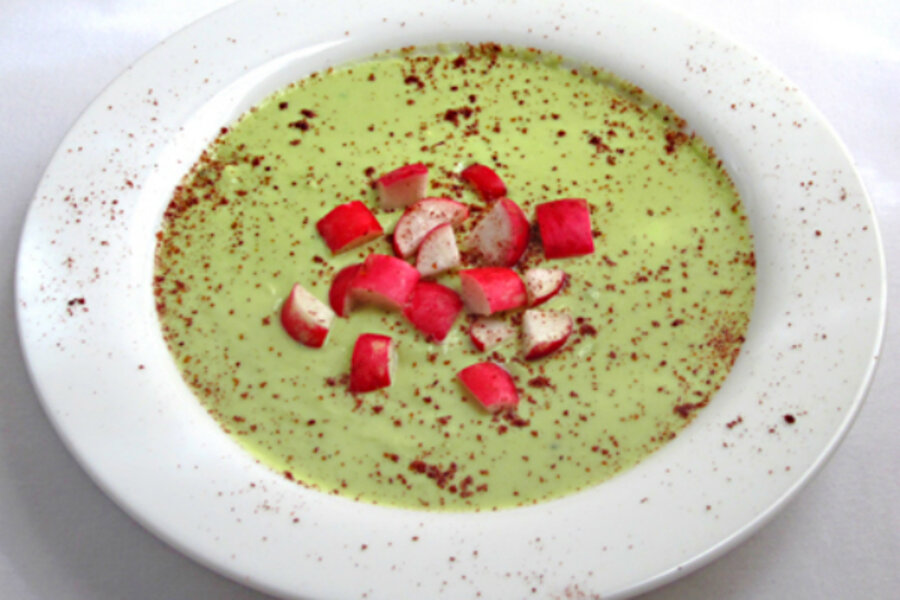By Terry Boyd / Blue Kitchen
Four starter servings (or two greedy ones)
1 cup chicken stock
10 ounces Yukon Gold potatoes
10 ounces cucumber, peeled, seeded and chopped into chunks (see Kitchen Notes)
Flesh of one ripe avocado
1 tablespoon lime juice
1/2 cup buttermilk
1/2 cup Greek yogurt (or use 1 cup of buttermilk or Greek yogurt)
1/2 cup half and half
1/2 cup radish cut into 1/2-inch rounds, then into quarters and halves
powdered sumac
1. First, prepare the cucumber and radish, and put them in the refrigerator so they get nice and cold.
2. Peel the potato, rinse and dice it, and put it in a saucepan with the chicken stock. Cook until the potato is very soft. This will go faster if you cut the potato into small pieces. This ends the heating portion of your soup making.
3. Pour the potato and stock into a container and refrigerate until completely chilled.
4. To assemble, pour the potato and stock mixture into the bowl of a food processor. Add the lime juice, cucumber, avocado and the dairy products (give the buttermilk a good shake before measuring it). Add a dash of salt, then process until completely smooth, for at least 3 minutes.
5. If the soup seems too thick (too much like a dip, say), cautiously add a little icy water until the soup is the texture you prefer.
6. Ladle into chilled soup plates or bowls that complement the elegant pale green color. Then add the radish garnish and, finally, sprinkle a pinch of powdered sumac over each bowl and serve.
Kitchen Notes
To peel or not to peel. If you use unwaxed cucumbers, you can leave about half the peel on, which will contribute to the pretty color.
See the full post on Stir It Up!







